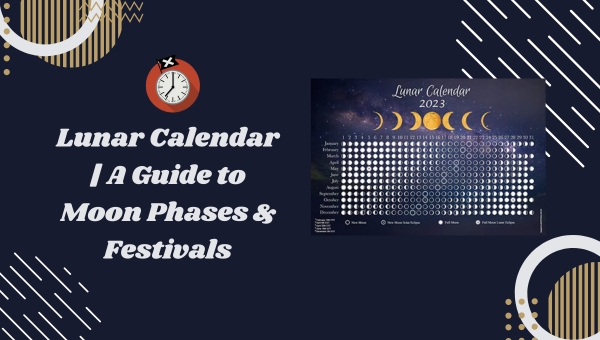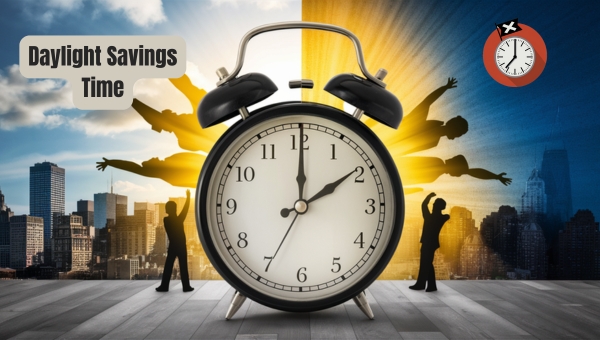The Basics of Sundial | Telling Time with the Sun
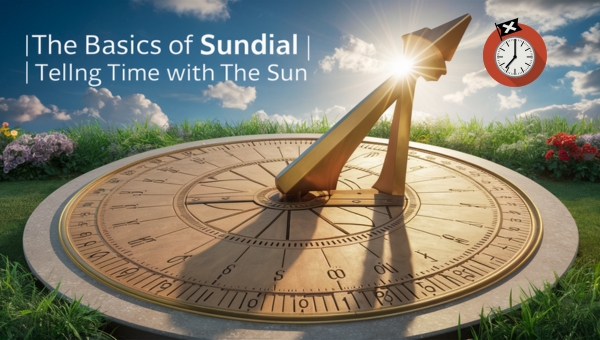
Ever wondered how people told time before clocks and watches? This article will take you on a fascinating journey into the world of the sundial. We’ll delve into its history, mechanics, and how it tells time.
You’ll also learn about its limitations and its relevance today. Whether you’re a history buff or just curious, we’ve got a captivating deep dive waiting for you. Let’s embark on this enlightening adventure together!
An In-Depth Look at the Sundials
Sundials are fascinating instruments that have been used for centuries to measure time. These devices rely on the position of the sun to cast a shadow, which moves across a marked surface to indicate the hour.
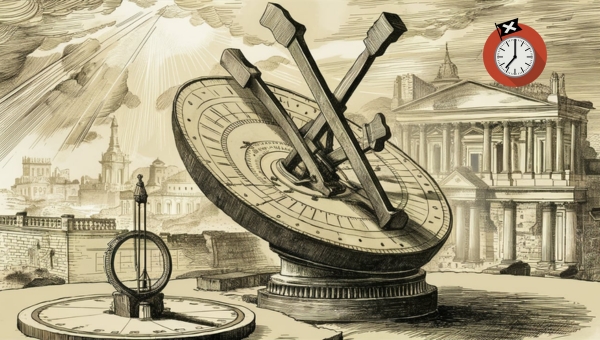
While they may seem simple, sundials are a testament to human ingenuity and our desire to understand the passage of time. Let’s delve into the history and mechanics of these ancient tools.
History of the Sundial
The origins of the sundial can be traced back to ancient civilizations, where they were among the earliest timekeeping devices. The ancient Egyptians are credited with creating some of the first sundials around 1500 BCE.
They used obelisks to cast shadows, which helped them divide the day into parts.
- The Greeks and Romans later refined these early designs, adding more precise markings to their sundials.
- In ancient China, sundials were also developed independently and were used to regulate daily activities and agricultural practices.
- By the medieval period, sundials had spread across Europe, where they evolved further and became more sophisticated.
Interestingly, sundials were not just practical tools but also held cultural and religious significance. They were often placed in public spaces, temples, and gardens, symbolizing the harmony between human life and the cosmos.
The Mechanics of a Sundial
Understanding how a sundial works involves exploring its key components and their functions. This section will delve into the mechanics behind the sundial, offering insights into how it measures time using the sun’s position. We will begin by examining the gnomon, the crucial part that casts the shadow, and then move on to the dial plate and its hour lines.
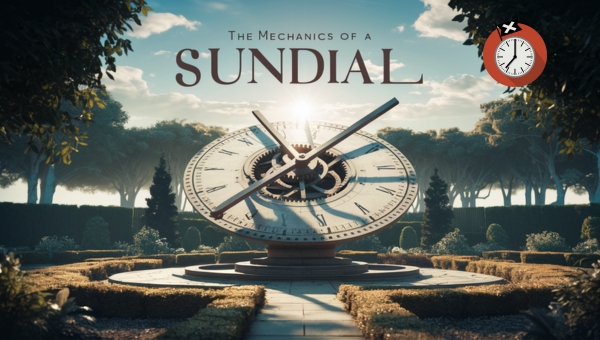
Gnomon: The Shadow Maker
The gnomon is the part of the sundial that casts a shadow, playing a pivotal role in time measurement. Typically, it is a rod or a triangular blade that stands perpendicular to the dial plate. As the sun moves across the sky, the gnomon creates a shadow that aligns with different hour lines on the dial plate.
This shadow’s position changes throughout the day, allowing one to read the time by noting where the shadow falls on the marked lines.
The Dial Plate and Hour Lines
The dial plate is the flat surface on which the hour lines are marked. These lines represent the hours of the day and are arranged in a circular pattern around the base of the gnomon.
As the sun progresses in its daily path, the shadow of the gnomon moves across these lines, indicating the time. Here are some key points about the dial plate and hour lines:
- Marking the Hours: The hour lines are typically spaced to represent each hour of daylight.
- Reading the Time: By observing where the shadow falls on the hour lines, one can determine the approximate time of day.
- Orientation: The dial plate must be correctly oriented, usually facing true north in the Northern Hemisphere, to provide accurate time readings.
Understanding these components is essential for grasping how sundials function and have been used historically to tell time.
How Sundials Tell Time?
Sundials are fascinating tools that use the interaction between the sun and a specific part called the gnomon to mark the passage of time.
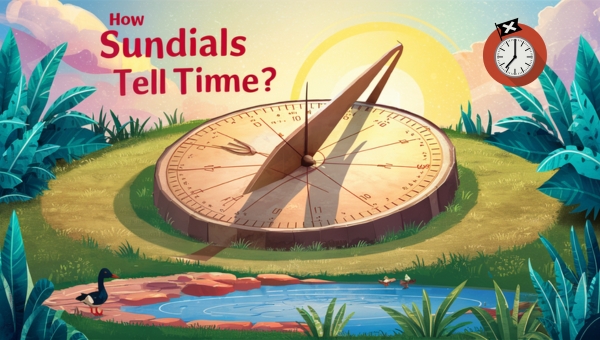
They also require adjustments based on the season and geographic location to ensure accurate time-telling. Let’s dive into these elements to understand how sundials work.
Interaction Between Sun and Gnomon
The gnomon is the part of the sundial that casts a shadow. As the sun moves across the sky:
- The gnomon’s shadow shifts accordingly.
- This shadow falls on the dial plate, which is marked with hour lines.
- The position of the shadow on these lines indicates the time of day.
This interaction between the sun and the gnomon is what allows a sundial to function as a time-telling device.
Seasonal and Geographical Adjustments
For a sundial to tell time accurately, it must be adjusted based on both the season and its geographic location:
- Seasonal Adjustments: The sun’s path changes with the seasons, so the angle of the gnomon may need to be modified.
- Geographical Adjustments: Sundials are aligned with the Earth’s rotational axis, so their positioning must be adjusted based on the latitude of their location.
These adjustments are crucial for the sundial to provide precise time readings throughout the year.
Limitations of Sundials
While sundials are fascinating and historically significant tools for timekeeping, they come with their own set of limitations. These limitations can affect their accuracy and reliability, making them less practical in certain conditions. Let’s delve into two primary constraints that impact the functionality of sundials.
Weather and Lighting Conditions
Sundials rely on the presence of sunlight to function. This dependence means that in certain weather conditions, they are not effective.
For example:
- Cloudy Weather: When the sky is overcast, the sun’s rays are blocked, preventing the gnomon from casting a clear shadow.
- Nighttime: Without the sun, sundials are entirely non-functional once night falls.
- Indoor Use: Sundials cannot be used indoors unless there is a consistent and directed source of light mimicking sunlight.
These factors make sundials unreliable in environments where sunlight is not consistent or predictable.
Inaccuracy Due to Earth’s Tilt
Another notable limitation of sundials is the impact of the Earth’s axial tilt. The tilt of the Earth affects the angle at which the sun’s rays hit the sundial, which can lead to inaccuracies if not properly accounted for. Key points to consider include:
- Seasonal Changes: As the Earth orbits the sun, the angle of sunlight changes with the seasons, requiring adjustments to the sundial’s setup for accurate time measurement.
- Geographic Variations: The effectiveness and accuracy of a sundial can vary based on its geographic location. Sundials need to be calibrated based on the latitude where they are used.
- Complex Adjustments: Properly adjusting a sundial to account for these factors can be complex and may require precise measurements and settings.
These limitations mean that while sundials are intriguing historical tools, their practical use today is limited by natural phenomena and the need for ongoing adjustments.
Modern Relevance of Sundials
Despite the advancements in modern timekeeping, sundials still hold a unique place in today’s world. They carry with them a rich history and cultural significance that makes them more than just ancient tools for telling time.
Historical and Cultural Significance
Sundials are not just practical devices; they are also artifacts of history. They remind us of the ingenuity of ancient civilizations and their efforts to measure time. In modern times, sundials are often used as decorative objects in gardens and public spaces.
Their presence can evoke a sense of nostalgia and admiration for past scientific achievements. Additionally, sundials symbolize a connection to nature, as they rely on the sun’s movement across the sky.
Sundials vs Modern Timekeeping
When compared to modern clocks, sundials have certain limitations that make them unsuitable for practical timekeeping today:
- Dependency on sunlight: Sundials require sunlight to function, making them useless at night or on cloudy days.
- Geographical limitations: Accurate time-telling with sundials depends on the specific geographic location and adjustments for seasonal changes.
- Inaccuracy: Modern clocks provide precise time measurement, whereas sundials are less accurate due to the Earth’s axial tilt and other factors.
While sundials are rarely used for practical purposes, they remain valued for their historical importance and aesthetic appeal. They serve as a reminder of how far we have come in the quest to measure and understand time.
FAQs
Do Sundials need adjustments?
Yes, Sundials need adjustments based on the season and geographic location to ensure accurate time-telling.
Are Sundials still relevant today?
While not used for practical timekeeping, Sundials hold cultural and historical significance and are often used as decorative items.
How do Sundials compare to modern clocks?
Modern clocks use mechanical or electronic means to keep time, making them more accurate and reliable than Sundials, which depend on the sun’s position.
Conclusion
Sundials are fascinating artifacts that blend science, art, and history. They illustrate how ancient civilizations ingeniously used the sun to track time. While modern technology has largely replaced sundials for practical purposes, their historical and cultural significance remains undeniable. Understanding the mechanics and limitations of sundials offers a unique glimpse into the evolution of timekeeping.
If you enjoyed learning about sundials, explore more captivating topics on our blog. Dive into the world of historical innovations and modern marvels today!



